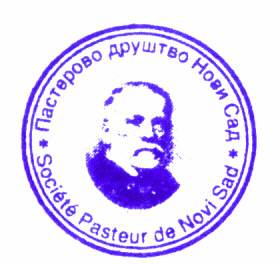md-medicaldata
Main menu:
- Naslovna/Home
- Arhiva/Archive
- Godina 2024, Broj 1
- Godina 2023, Broj 3
- Godina 2023, Broj 1-2
- Godina 2022, Broj 3
- Godina 2022, Broj 1-2
- Godina 2021, Broj 3-4
- Godina 2021, Broj 2
- Godina 2021, Broj 1
- Godina 2020, Broj 4
- Godina 2020, Broj 3
- Godina 2020, Broj 2
- Godina 2020, Broj 1
- Godina 2019, Broj 3
- Godina 2019, Broj 2
- Godina 2019, Broj 1
- Godina 2018, Broj 4
- Godina 2018, Broj 3
- Godina 2018, Broj 2
- Godina 2018, Broj 1
- Godina 2017, Broj 4
- Godina 2017, Broj 3
- Godina 2017, Broj 2
- Godina 2017, Broj 1
- Godina 2016, Broj 4
- Godina 2016, Broj 3
- Godina 2016, Broj 2
- Godina 2016, Broj 1
- Godina 2015, Broj 4
- Godina 2015, Broj 3
- Godina 2015, Broj 2
- Godina 2015, Broj 1
- Godina 2014, Broj 4
- Godina 2014, Broj 3
- Godina 2014, Broj 2
- Godina 2014, Broj 1
- Godina 2013, Broj 4
- Godina 2013, Broj 3
- Godina 2013, Broj 2
- Godina 2013, Broj 1
- Godina 2012, Broj 4
- Godina 2012, Broj 3
- Godina 2012, Broj 2
- Godina 2012, Broj 1
- Godina 2011, Broj 4
- Godina 2011, Broj 3
- Godina 2011, Broj 2
- Godina 2011, Broj 1
- Godina 2010, Broj 4
- Godina 2010, Broj 3
- Godina 2010, Broj 2
- Godina 2010, Broj 1
- Godina 2009, Broj 4
- Godina 2009, Broj 3
- Godina 2009, Broj 2
- Godina 2009, Broj 1
- Supplement
- Galerija/Gallery
- Dešavanja/Events
- Uputstva/Instructions
- Redakcija/Redaction
- Izdavač/Publisher
- Pretplata /Subscriptions
- Saradnja/Cooperation
- Vesti/News
- Kontakt/Contact
 Pasterovo društvo
Pasterovo društvo
- Disclosure of Potential Conflicts of Interest
- WorldMedical Association Declaration of Helsinki Ethical Principles for Medical Research Involving Human Subjects
- Committee on publication Ethics
CIP - Каталогизација у публикацији
Народна библиотека Србије, Београд
61
MD : Medical Data : medicinska revija = medical review / glavni i odgovorni urednik Dušan Lalošević. - Vol. 1, no. 1 (2009)- . - Zemun : Udruženje za kulturu povezivanja Most Art Jugoslavija ; Novi Sad : Pasterovo društvo, 2009- (Beograd : Scripta Internacional). - 30 cm
Dostupno i na: http://www.md-medicaldata.com. - Tri puta godišnje.
ISSN 1821-1585 = MD. Medical Data
COBISS.SR-ID 158558988
INFLUENCE OF DECABROMINATED DIPHENYL ETHER ON CADMIUM AS OXIDATIVE STRESS INDUCER IN KIDENEY- SUBACUTE ORAL STUDY IN RATS
UTICAJ DEKABROMOVANOG DIFENIL ETRA NA TOKSIČNOST KADMIJUMA POSREDSTVOM OKSIDATIVNOG STRESA – SUBAKUTNA ORALNA STUDIJA NA PACOVIMA
Authors
Marijana Ćurčić1, Marko Antunović2, Maja Džoković3, Saša Janković4, Vesna Milovanović5, Snežana Đorđević2, Vesna Kilibarda2, Slavica Vučinić2, Biljana Antonijević1
1 University of Belgrade – Faculty of Pharmacy, Depertment of Toxicology „Akedamik Danilo Soldatović“, Vojvode Stepe 450, 11221 Belgrade, Serbia
2 National Poison control center, Military Medical Academy, Crnotravska 17, Belgrade, Serbia
3 Consultant in analytical biochemistry, Belgrade, Serbia
4 Institute of Meat Hygiene and Technology, Kacanskog 13, Belgrade, Serbia
5 University Childrens Hospital Tiršova, Tiršova 2, Belgrade, Serbia
• The paper was received on 01.03.2016. / Accepted on 09.03.2016.
Abstract
It is known that kidneys are target tissue for Cd toxicity but there is not enough literature data on kidney effects of BDE-209. Moreover, Cd as toxic metal and BDE-209 as organic halogenated pollutant can share similar mechanism of action like, oxidative stress which is already assumed. However, how will Cd act as prooxidant in presence of BDE-209 is still not investigated, therefore, the objective of this study was to assess this BDE-209 influence. Results of this study indicated slight decrease in MDA in rat’s kidney homogenates after subacute exposure to Cd and/or BDE-209, while SOD activity was increased and content of –SH groups decreased. Based on dose-response assessment, BDE-209 did not influence Cd toxicity mediated by chosen oxidative stress parameters, namely the derived CEDL5 values were the same for single Cd and for Cd given in combination with the BDE-209.
In conclusion, dynamic of oxidative process has influence on the parameters levels. Co-exposure with polybrominated organic pollutant did not influence Cd effects on oxidative stress parameters. Having in mind that this is pilot study, performed with only one dose of BDE-209, further investigations are necessary, including changes in dose ranges, duration of exposure etc. Moreover, results contributes to the issue of mixture toxicology even BDE-209 did not influenced oxidative stress as mechanism of Cd toxicity.
Key words
cadmium, decabromiated diphenyl ether (DBE-209), oxidative stress
References
- ATSDR, 2004. Toxicological profile for polybrominated biphenyls and polybrominated diphanyl ethers. Agency for Toxic Substances and Disease Registry. 2004.
- ATSDR, 2012. Toxicological profile for cadmium. Agency for Toxic Substances and Disease Registry. 2012.
- Birnbaum LS, Staskal DF. Brominated flame retardants: cause for concern? Environ Health Perspect. 2004;112(1):9-17.
- Darnerud PO, Eriksen GS, Johannesson T, Larsen PB, Viluksela M. Polybrominated diphenyl ethers: occurrence, dietary exposure, and toxicology. Environ Health Perspect. 2001; 109(Suppl 1): 49-68.
- de Wit CA. An overview of brominated flame retardants in the environment. Chemosphere. 2002; 46(5): 583–624.
- EFSA, 2011. Use of BMDS and PROAST software packages by EFSA Scientific
Panels and Units for applying the Benchmark Dose (BMD) approach in risk assessment. EN-113. 2011;1-190. - EFSA, 2012. Scientific report of EFSA cadmium dietary exposure in the European population. 2012;10(1):1–37.
- Roosens L, Cornelis C, D’Hollander W, Bervoets L, Reynders H, Van Campenhout K et al. Exposure of the Flemish population to brominated flame retardants: model and risk assessment. Environ Int. 2010; 36(4): 368–76.
- Matović, V., Buha, A., Bulat, Z., Đukić-Ćosić, D., Miljković, M., Ivanišević, J. and Kotur-Stevuljević, J. Route-dependent effects of cadmium/cadmium and magnesium acute treatment on parameters of oxidative stress in rat liver. Food and chemical toxicology, 2012; 50(3): 552-557.
- Milovanovic V, Buha A, Matovic V, Curcic M, Vucinic S, Nakano T, Antonijevic B. Oxidative stress and renal toxicity after subacute exposure to decabrominated diphenyl ether in Wistar rats. Environmental Science and Pollution Research. 2015; 16: 1-8.
- Matović, V., Đukić-Ćosić, D., Buha, A. and Bulat, Z., 2013. Route, dose and duration of exposure to cadmium-relevance to oxidative stress induction. Peroxidases: Biochemical Characteristics, Functions and Potential Applications. Eds: Bogaert L, Coppens N, Nova Science Publisher, New York, pp.159-175.
- Brzóska MM, Rogalska J, Kupraszewicz E. The involvement of oxidative stress in the mechanisms of damaging cadmium action in bone tissue: a study in a rat model of moderate and relatively high human exposure. Toxicology and applied pharmacology. 2011; 250(3): 327-35.
- Piłat-Marcinkiewicz B, Sawicki B, Brzoska M, Moniuszko-Jakoniuk J. Effect of chronic administration of cadmium on the rat thyroid: radioimmunological and immunohistochemical studies. Folia Histochem Cytobiol. 2001; 40(2): 189–90.
- Van der Ven L, van de Kuil T, Leonards PE, Slob W, Canton RF, Germer S et al. A 28-day oral dose toxicity study in Wistar rats enhanced to detect endocrine effects of decabromodiphenyl ether (decaBDE). Toxicol lett. 2008: 179(1): 6-14.
- Ćurčić M, Tanasković S, Stanković S, Janković S, Antunović M, Đorđević S, Kilibarda V, Vučinić S, Antonijević B. Relationship of hepatotoxicity and the target tissue dose of decabrominated diphenyl ether in subacutely exposed Wistar rats. Vojnosanitetski pregled. 2015; 72(5): 405-13.
- Misra HP, Fridovich I. The role of superoxide anion in the autoxidation of epinephrine and a simple assay for superoxide dismutase. J Biol Chem. 1972; 247(10): 3170–5.
- Ellman GL. Tissue sulfhydryl groups. Arch Biochem Biophys. 1959; 82(1): 70–7.
- Slob W. Dose-response modeling of continuous endpoints. Toxicol Sci. 2002; 66(2): 298–312.
- Dong W, Simeonova PP, Gallucci R, Matheson J, Flood L, Wang S et al. Toxic metals stimulate inflammatory cytokines in hepatocytes through oxidative stress mechanisms. Toxicol Appl Pharmacol. 1998;151(2):359–66.
- Mladenovic D, Radosavljevic T, Ninkovic M, Vucevic D, Sljivancanin T, Grbatinic I et al. Possible role of oxidative stress in acute cadmium hepatotoxicity in rats. Acta Vet (Beogr). 2010; 60(5-6): 449–59.
- Nordberg GF. Historical perspectives on cadmium toxicology. Toxicol Appl Pharmacol. 2009; 238(3): 192–200.
- Liu J, Qu W, Kadiiska MB. Role of oxidative stress in cadmium toxicity and carcinogenesis. Toxicol Appl Pharmacol. 2009; 238(3): 09–14.
- Manca D, Ricard AC, Trottier B, Chevalier G. Studies on lipid peroxidation in rat tissues following administration of low and moderate doses of cadmium chloride. Toxicology. 1991;67(3):303–23.
- Curcic M, Durgo K, Kopjar N, Ancic M, Vucinic S, Antonijevic B. Cadmium and decabrominated diphenyl ether mixture: in vitro evaluation of cytotoxic, prooxidative and genotoxic effects. Environmental toxicology and pharmacology. 2014; 30;38(2): 663-71.
- Rani A, Kumar A, Lal A, Pant M. Cellular mechanisms of cadmium-induced toxicity: a review. International journal of environmental health research. 2014; 24(4): 378-99.
- Brzoska MM, Moniuszko-Jakoniuk J, Pilat-Marcinkiewicz B, Sawicki B. Liver and Kidney Function and Histology in Rats Exposed To Cadmium and Ethanol. Alcohol Alcohol. 2003; 38(1): 2–10.
- Haouem S, El Hani A. Effect of cadmium on lipid peroxidation and on some antioxidants in the liver, kidneys and testes of rats given diet containing cadmium-polluted radish bulbs. Journal of toxicologic pathology. 2013; 26(4): 359.
 Medicinski fakultet
Medicinski fakultet